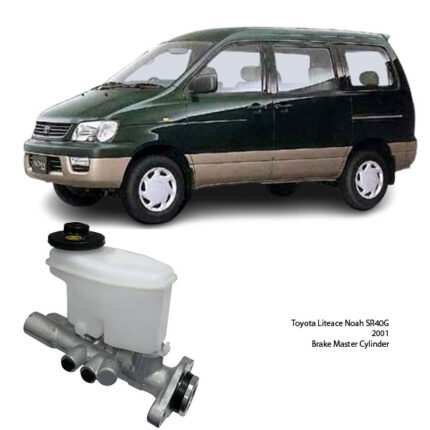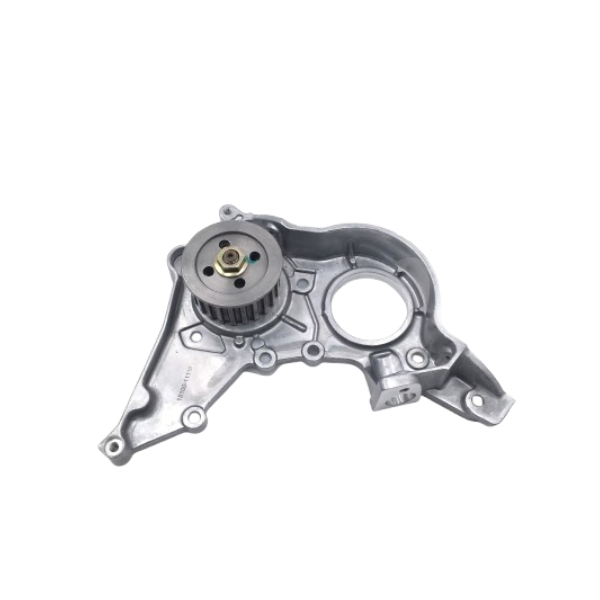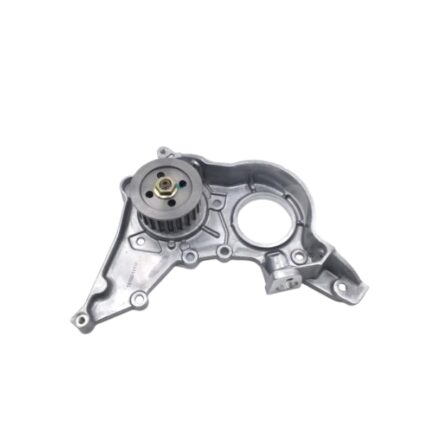Get Oil Pump Assy with Sensor For 4E-FE / 5E-FE Engine 15100-11110 in Kenya
The Oil Pump Assembly with Sensor is a critical component in the lubrication system of internal combustion engines. Its primary function is to circulate engine oil under pressure to the rotating bearings, sliding pistons, and camshaft components, ensuring all moving parts are lubricated, cooled, and protected from wear and thermal degradation. The integration of a sensor within the assembly adds a crucial layer of monitoring and feedback, enabling real-time diagnostics and enhanced engine management.
This component combines mechanical precision and electronic sensing, playing a dual role: delivering a constant oil flow under pressure and providing real-time data to the engine control unit (ECU) for optimal performance and safety. Proper oil circulation is essential to engine longevity, and failure in the oil pump or its monitoring system can lead to severe internal engine damage.
Functional Overview
The oil pump draws oil from the sump and delivers it through galleries to all parts of the engine. It maintains oil pressure, which is necessary for forming a lubricating film between moving metal surfaces. Without sufficient oil pressure, friction and heat rapidly increase, leading to component scoring, overheating, and engine failure.
The integrated sensor within the assembly continuously monitors oil pressure or flow rate and sends electrical signals to the ECU or dashboard. This feedback allows the system to detect drops in pressure, clogged passages, or pump inefficiency and alert the driver or initiate engine protection protocols such as limp mode.
Construction and Design
A typical Oil Pump Assembly with Sensor consists of several key components, each engineered to meet high standards of mechanical and electrical reliability:
1. Pump Housing
-
Made of die-cast aluminum or iron, the housing forms the main body of the pump and provides structural integrity.
-
Machined to tight tolerances to accommodate the pumping elements and ensure leak-free operation.
2. Gear or Rotor Mechanism
-
Common pump types include gear, trochoid, and gerotor designs.
-
These mechanisms create suction and pressure by rotating within the housing, drawing oil from the sump and pushing it through the system.
3. Pressure Relief Valve
-
Integrated to prevent excess pressure from damaging engine seals or gaskets.
-
Automatically diverts excess oil back to the sump when pressure exceeds a set threshold.
4. Oil Pressure Sensor or Flow Sensor
-
Typically a piezoelectric or resistive transducer.
-
Senses changes in oil pressure or flow and converts them into electrical signals for the ECU or dashboard gauge.
5. Electrical Connector
-
Ensures seamless communication between the sensor and the vehicle’s electronics.
-
Features sealed, weather-resistant terminals to prevent corrosion and interference.
Operating Principle
The oil pump is mechanically driven, typically via the crankshaft or camshaft, using a chain, belt, or gear mechanism. As the engine operates:
-
The pump draws oil through a pickup tube and mesh screen to remove large contaminants.
-
The pumping mechanism pressurizes the oil and sends it through the engine’s oil galleries.
-
The oil coats bearings, piston skirts, lifters, cam lobes, and other high-friction areas.
-
Excess oil drains back to the sump by gravity, completing the cycle.
The integrated sensor, depending on its type, continuously measures either oil pressure (most common) or flow and transmits real-time values. This data is essential for:
-
Activating dashboard oil warning lights
-
Adjusting variable valve timing (VVT)
-
Controlling engine idling behavior
-
Preventing engine operation under insufficient lubrication
Sensor Functionality
The most common sensors integrated into an oil pump assembly include:
a) Oil Pressure Sensor
-
Measures hydraulic pressure inside the lubrication circuit.
-
Sends analog or digital signals to the ECU.
-
Typical pressure range: 0.2 to 5.0 volts representing 0 to 150 psi.
b) Oil Flow Sensor
-
Used in some modern engines to ensure actual oil movement, not just pressure.
-
Helps detect clogs or blockages even when pressure seems adequate.
These sensors are sealed and temperature-resistant, capable of functioning in conditions exceeding -40°C to 150°C, ensuring longevity under harsh operating environments.
Performance Characteristics
Key performance indicators for the Oil Pump Assy with Sensor include:
-
Flow Rate: Must deliver sufficient oil volume per minute, adjusted to engine RPM.
-
Pressure Stability: Must maintain a consistent pressure curve across RPM ranges.
-
Sensor Accuracy: Must deliver real-time, precise readings to within ±5% of actual pressure.
-
Durability: Typically rated for tens of thousands of operational hours.
-
Thermal Resistance: Must remain functional under extended engine heat cycles.
Common Failure Modes
While engineered for longevity, oil pump assemblies and their sensors can degrade over time. Common causes of failure include:
-
Wear of pump gears or rotors, reducing flow efficiency.
-
Blocked pickup screen or clogged oil galleries, causing pressure drops.
-
Relief valve malfunction, leading to unregulated pressure.
-
Sensor electrical failure, resulting in false warnings or lack of alerts.
-
Oil contamination, which can interfere with both mechanical and electrical functions.
Symptoms of failure may include:
-
Illuminated oil pressure warning light
-
Ticking or knocking sounds from the engine
-
Low oil pressure readings
-
Increased engine temperature
-
Reduced engine performance or limp mode activation
Testing and Diagnostics
To verify proper function:
-
Mechanical Tests: Oil pressure gauge can be used to confirm actual oil pressure at various RPMs.
-
Electrical Tests: Multimeters and scan tools can read sensor outputs and check continuity.
-
Visual Inspection: Checking for oil leaks, connector integrity, and contamination.
Routine oil changes and use of high-quality engine oil and filters significantly improve the reliability of the oil pump and its integrated sensor.
Installation Notes
During replacement or installation:
-
Always prime the pump with clean engine oil to prevent dry start.
-
Use new gaskets or O-rings to prevent leaks.
-
Torque all fasteners to manufacturer specifications.
-
Ensure correct sensor orientation and electrical connector engagement.
-
Verify functionality using a diagnostic scanner to confirm proper sensor output.
Follow us on Facebook for more parts.




